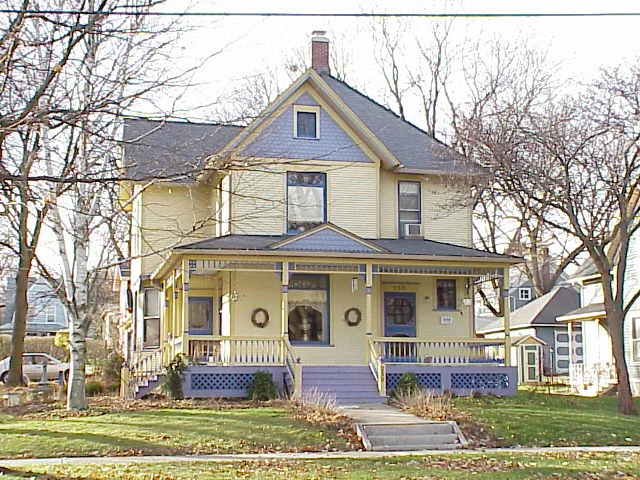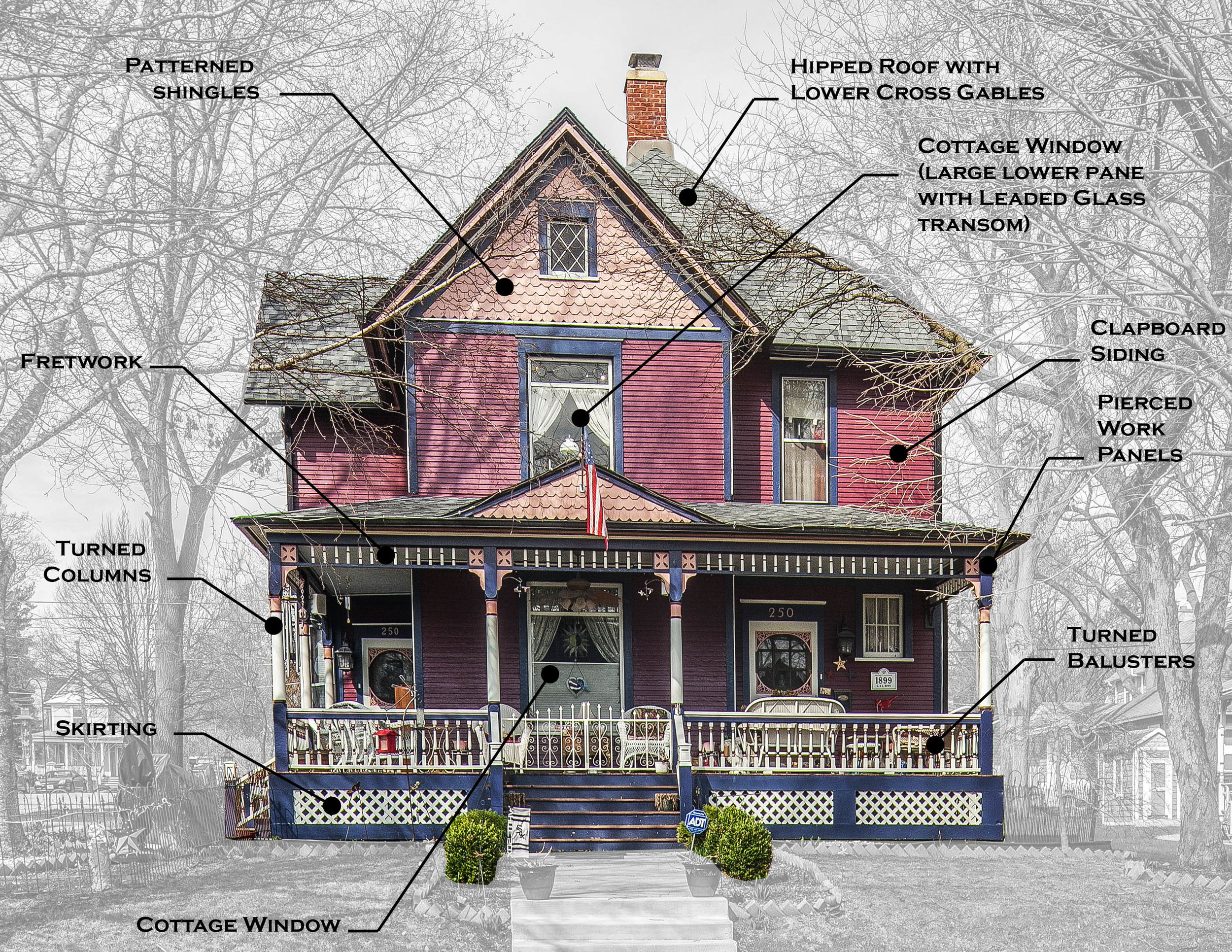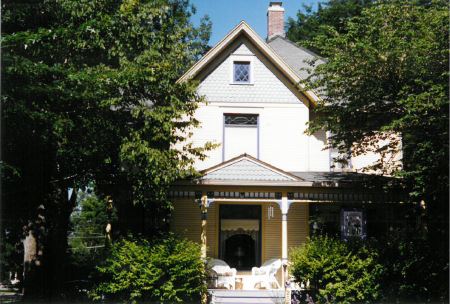250 VINCENT PLACE
HISTORIC SIGNIFICANCE
In 1898, Louis and Louisa Rinn purchased the lot at the corner of Vincent Place and Mill Street. By the 1900 City Directory, the Rinn family was listed at 250 Vincent Place. This listing noted a phone number as well, uncommon at the time. Louisa's father was Caspar Althen, head of the Elgin Eagle Brewery. Likely with the help of his father-in-law, Louis Rinn went into the Saloon owning business. When Elgin went dry in 1914, he gave up his saloon and took a job with the Illinois Watch Case Factory.
In 1920, the Rinns sold the property to Mary Volsch. She lived in the house with her family until 1954 when Kenneth and Marjorie Morse moved into the home. Kenneth was an editor at Brethren Publishing House which was associated with the Church of the Brethren on Highland Avenue. Many other employees and church members lived on this block as well. It has had few additional owners since the 1950s.
ARCHITECTURAL SIGNIFICANCE
250 Vincent Place is a nicely kept, Queen Anne style home in the spindlework sub-type. The most significant characteristic of the style seen on the house is the front facing roof gable. Along with it, there is a hipped roof section and a cross gabled roof section. The use of elements to avoid a plain surface are seen on all four facades. Window surrounds used on all four facades are simple. Decorative fish-scale style siding can be seen throughout in blue, yellow and maroon accents.
The front facade is the most detailed with the porch exhibiting spindlework detailing on the porch supports and frieze add to the Queen Anne style. Windows on the front facade are in varying sizes. The most prominent of them is a the large, single paned first floor window with a stained glass panel above it.
TIMELINE OF PREVIOUS OWNERS
Sources: 2004 Heritage Plaque Application; Audio: TextAloud




